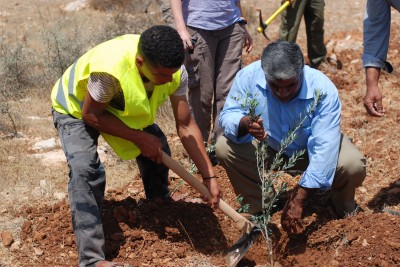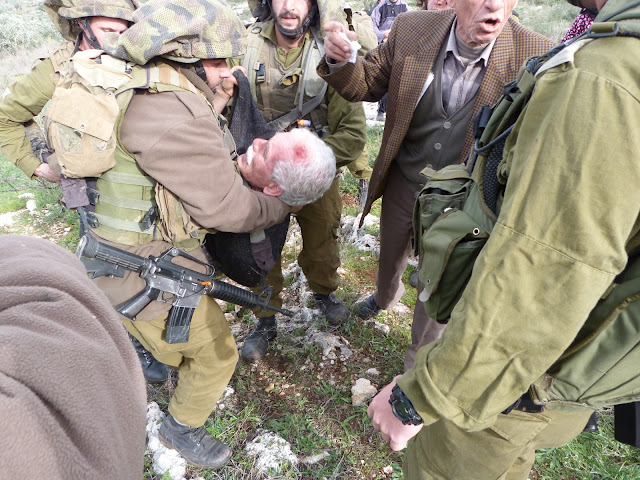Tag: Nablus
-
Burin: Yitzhar settlers leave the mark of violence
by Veronica 10 February 2012 | International Solidarity Movement, West Bank On Thursday 9 February at about 10pm, a house in the village of Burin near Nablus was attacked by settlers. Approximately 50 armed settlers approached a house near the edge of the village and threw stones and rocks at the inhabitants, shouting at them…
-
Turtles in Aqraba
by Jonas Weber 10 February 2012 | International Solidarity Movement, West Bank “Hurry up you turtles!” Wael yelled in the distance. He had suddenly turned this walk into some kind of contest. We skipped across the rocky landscape of Palestine, dirty and with the sun in our eyes. We were planting trees in the small…
-
In Photos: Settlers and Israeli military violently steal land in Kufr Qaddoum
6 February 2012 | International Solidarity Movement, West Bank On February 5 the residents of Kufr Qaddoum noticed several soldiers and illegal settlers on their lands who were plotting how to illegally seize land from the village. Upon arrival, International Solidarity Movement received word that indeed the colonizers were planning an action to seize land…


